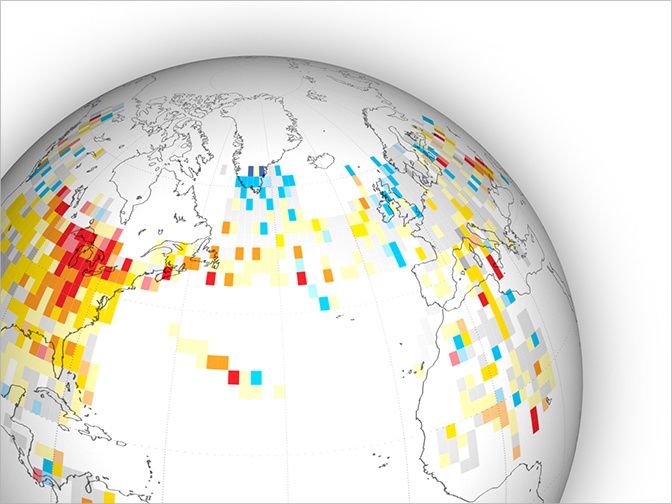

Every year ECMWF invites its forecast users to the ‘Using ECMWF Forecasts’ (UEF) meeting, a forum for exchanging ideas and experiences on the use of ECMWF data and products.
This year’s meeting takes place at ECMWF from 6 to 9 June, with the theme ‘Shaping future approaches to evaluating high-impact weather forecasts’. Registration is free and is open to all ECMWF forecast users in Europe and around the world.
The event is an opportunity for users to find out about ECMWF’s activities and future plans, to provide feedback to ECMWF and to contribute to the discussion on how to evaluate high-impact weather forecasts.
High-impact weather is of particular interest to forecast users, and its prediction with a seamless ensemble analysis/forecast system is at the heart of ECMWF’s proposed new strategy.
Weather can have high impact by virtue of its extreme amplitude (e.g. tropical cyclones) or its longevity (e.g. heatwaves) and because of its societal impacts on specific user communities. All these aspects present a particular challenge for forecasting systems, and demand considerable development of diagnostic and verification capabilities.
UEF2016 will focus on the verification aspects with some emphasis on measuring the quality of the forecasts in a manner that is relevant to users.
The programme comprises talks by ECMWF staff on the latest developments of the forecasting systems and by participants, keynote addresses on specific topics to stimulate discussion and sessions where networking will be encouraged. There will also be a display area for visual demonstrations and posters.
Thematic areas
High-impact weather forecasts: measuring long-term improvement
Forecasting of high-impact weather events has become a central part of the work in NMSs, and an important aspect of the activities of commercial enterprises. Knowledge about the quality of model data and relevant ensemble-based products is essential to deliver value. The purpose of this section is to explore the use of verification scores that highlight long-term improvement of forecasts for high-impact weather events.
User-oriented verification
Measures of a model’s performance are an important element in building users’ confidence in the forecast. Such measures need to be relevant for user communities in order to allow them to identify weather situations in which the forecast is more or less reliable, and by identifying the extent to which the forecast is useful as a basis for decision-making in weather-sensitive activities. This section will explore the progress in user-oriented verification and the added value for the user communities, with a focus on ensemble-based forecasts.
Seamless verification across different time scales
Numerical weather prediction models provide forecasts for various time scales. From the verification viewpoint, this poses a challenge as the skill at different time scales will need to be compared even though verification questions may be different. This section will explore ideas for verification across time scales in an effort to provide forecast users with a seamless assessment of model skill.
For more information and to register, please go to Using ECMWF’s Forecasts (UEF2016).
